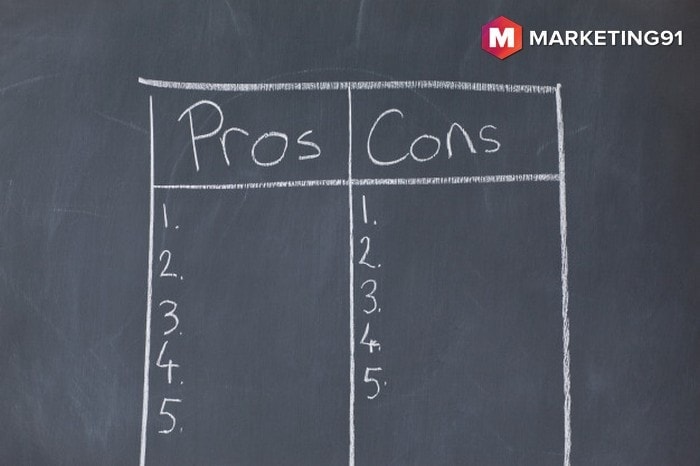Nominal Group Technique can be defined as a technique to find the solution for the existing problem.
Nominal group technique is slightly different from brainstorming as in this technique a member of the group come up with the solution to the problem on their own and then each solution is discussed, evaluated and graded in the group and finally, the idea which is liked and supported by maximum people of the group is selected and implemented.
Nominal group process encourages creative thinking and group decision making.
Table of Contents
The meaning of Nominal Group Technique
A nominal group technique is used by a company to find an effective solution for a problem or to think about a new idea or to make an important decision about the company.
It can also be named as systematic and organized brainstorming sessions organized in a company so that the creativity of every member can be used, and every member of the group is given equal and fair chance to present their ideas and views.
In this way, the participation of employees increases in the decision making, and shy and silent employees are encouraged to place their solution on the table rather than the domination of a few employees in decision making.
Steps of Nominal Group Technique
The Nominal Group Technique is used by a small group of employees to find a solution for a problem or to make important decisions.
In this section, you will learn about the steps that are required to be followed to use a Nominal Group Technique to reach a solution.
Step 1: Preparation
In the first step, it is important to make the necessary preparations to conduct a Nominal Group discussion distraction-free.
For example, keep ready worksheets and pens that employees can use to write down the solutions thought by them, a whiteboard to write down the ranking of the idea of each employee’s idea.
Print the problem on a sheet of paper and get a different sheet for each employee. Decide the voting method to select one final solution and lastly, explain the rules of the meeting in detail in all the employees.
Step 2: Let members generate an idea in isolation
Once you have explained the rules of the meeting to your employees. Next step is to hand over question sheets to each employee and ask them to write their solution on sheet.
By doing this, you allow employees to write down their solution without being judged, or they can sit and think about the idea in their head.
Step 3: Read out the ideas to the whole group
Once employees are done writing or thinking about their solution, then they will be asked to state one idea to the whole group. The idea could be the original idea that they have to write on the sheet, or it could be a different idea, and all the ideas are recorded.
No employee should be allowed to ask questions or clarification when people are stating their ideas.
Step 4: Discuss each idea one by one
Once everyone is done with stating their idea. The next step is to discuss the ideas one by one. Each idea will be discussed, along with its pros and cons. At this time, members are of the group can ask raise queries too.
Step 5: Voting for ideas
In the next section, each member should be asked to give a vote for the idea that they agree with. There could be two methods of voting one is ranking and other is rating, and finally, the idea with a maximum number of votes should be selected to address the problem.
Pros of Nominal Group Technique
- Nominal Group Techniques provide qualitative outputs for the solution of a problem.
- It gives a fair and equal chance to all the member to present their idea. Otherwise, such discussions are usually dominated by the more vocal employees.
- The process of nominal group technique is systematic and organized; therefore, it saves a lot of time.
- By using this technique, many ideas can be generated at one time.
- It is an effective technique to learn about the creativity level of all the employees.
- This technique is suitable to find the solution for controversial issues which otherwise can turn into a heated argument among the members of the group.
- Employees who work at a different level get equal opportunity to state their ideas.
Disadvantages of Nominal Group Technique
- Even the process itself does not take much time, but the preparation process of the Nominal group technique is quite time-consuming.
- Nominal Group technique lacks flexibility as only one problem is being discussed at one time.
- Members of the group might choose a less effective idea due to rivalry or to create a nuisance.
- Too many ideas can also confuse the members of the group.
Key differences between Nominal Group Technique and brainstorming
[table id=73 /
Liked this post? Check out the complete series on Decision Making




